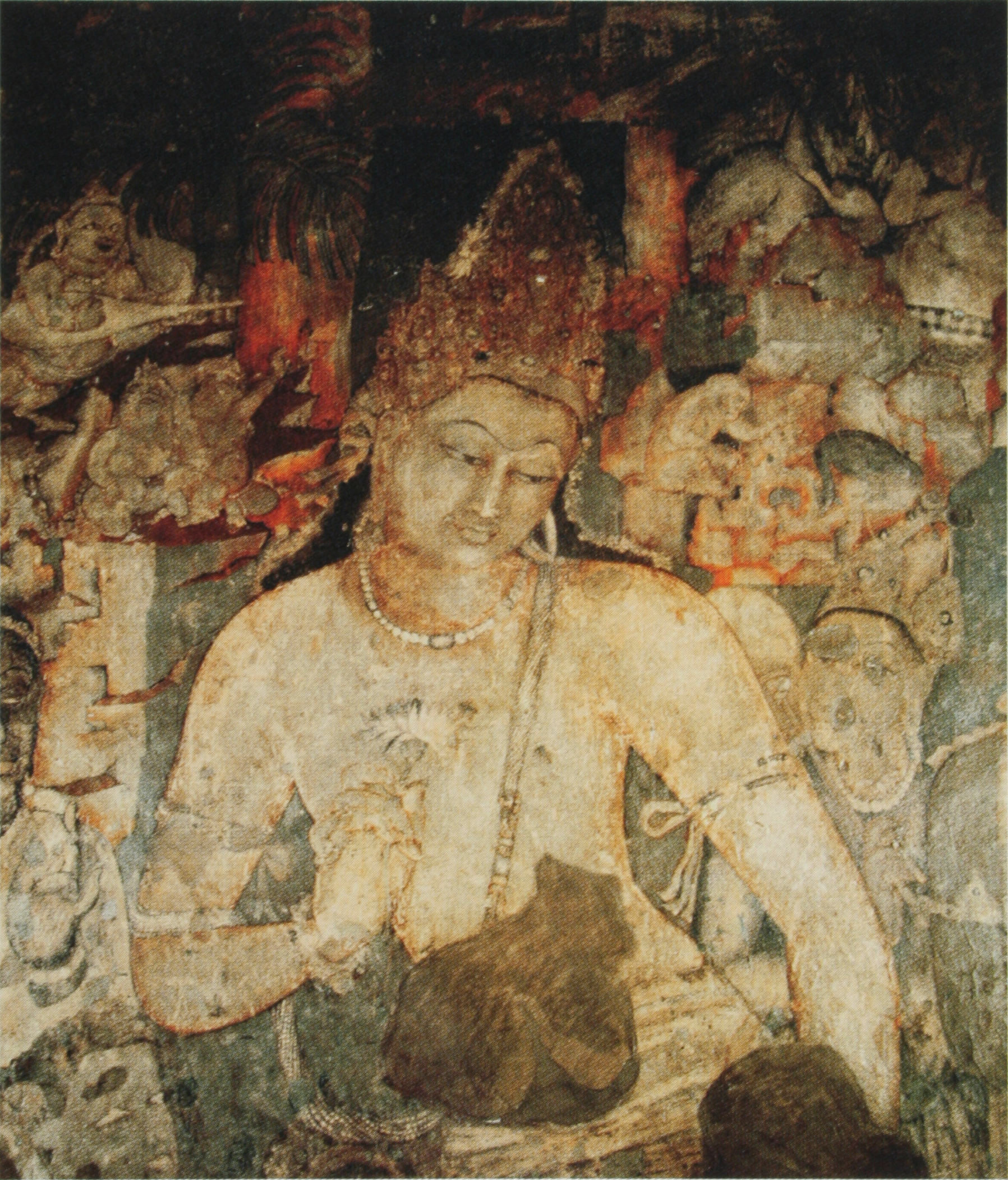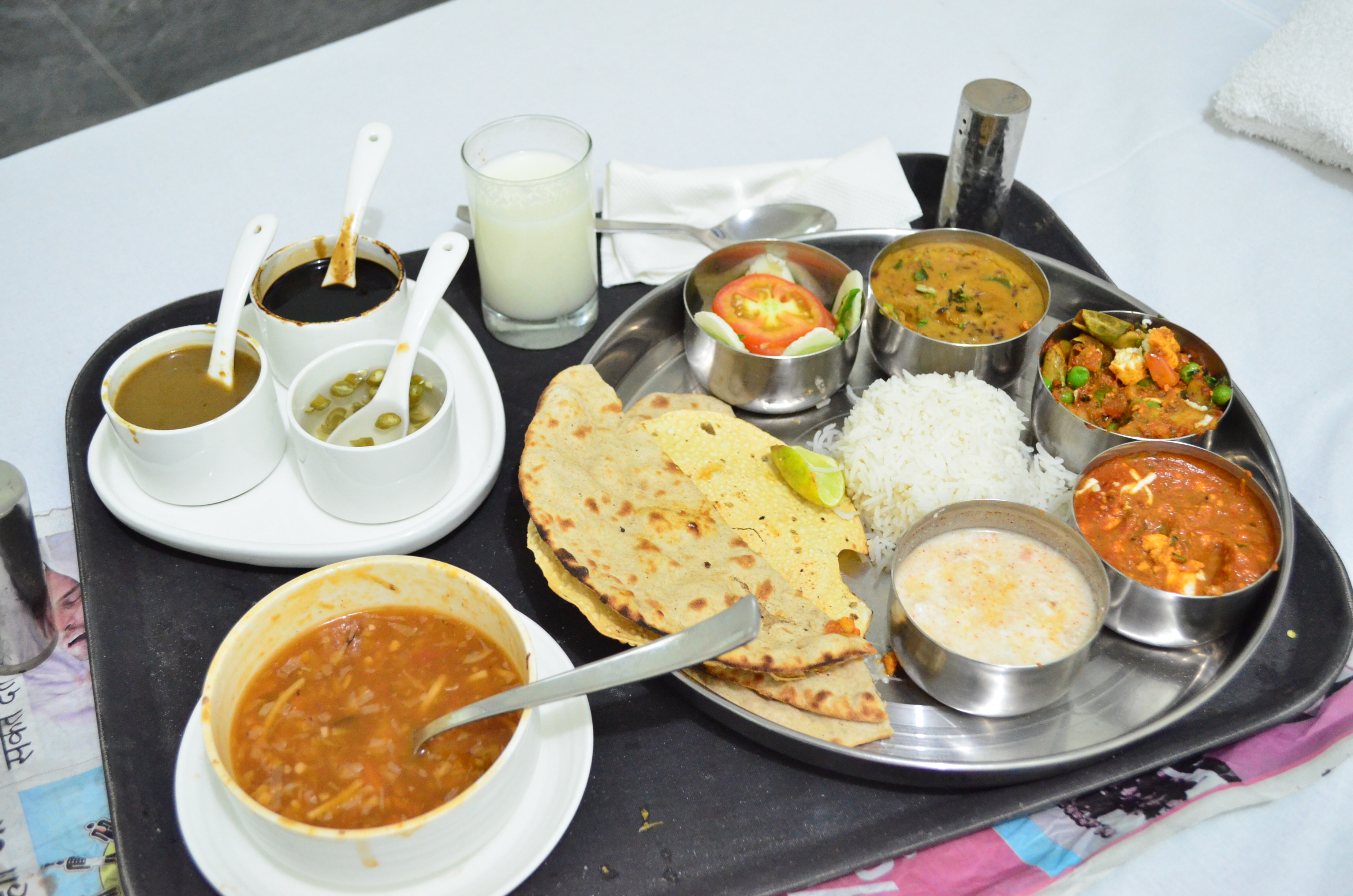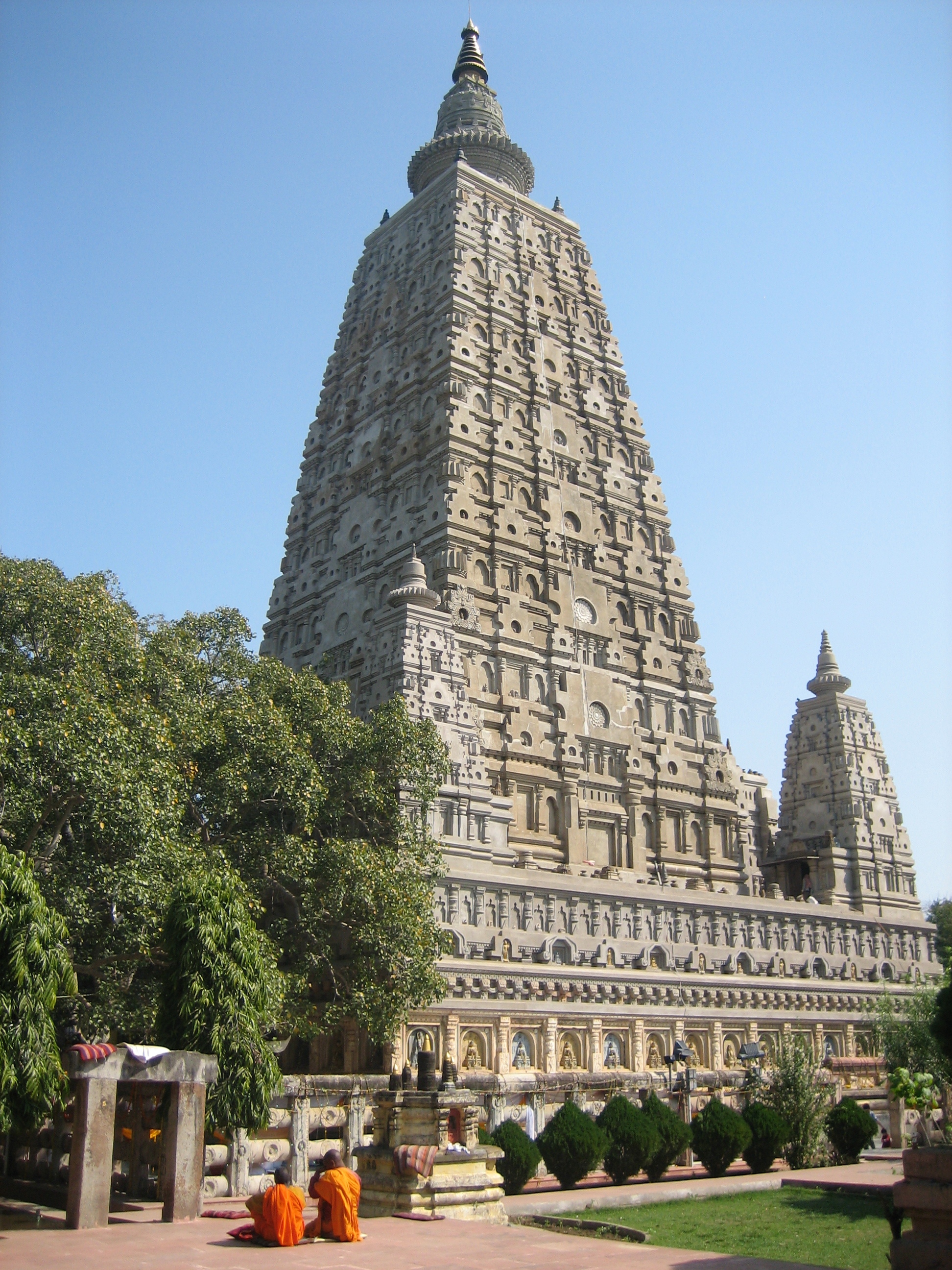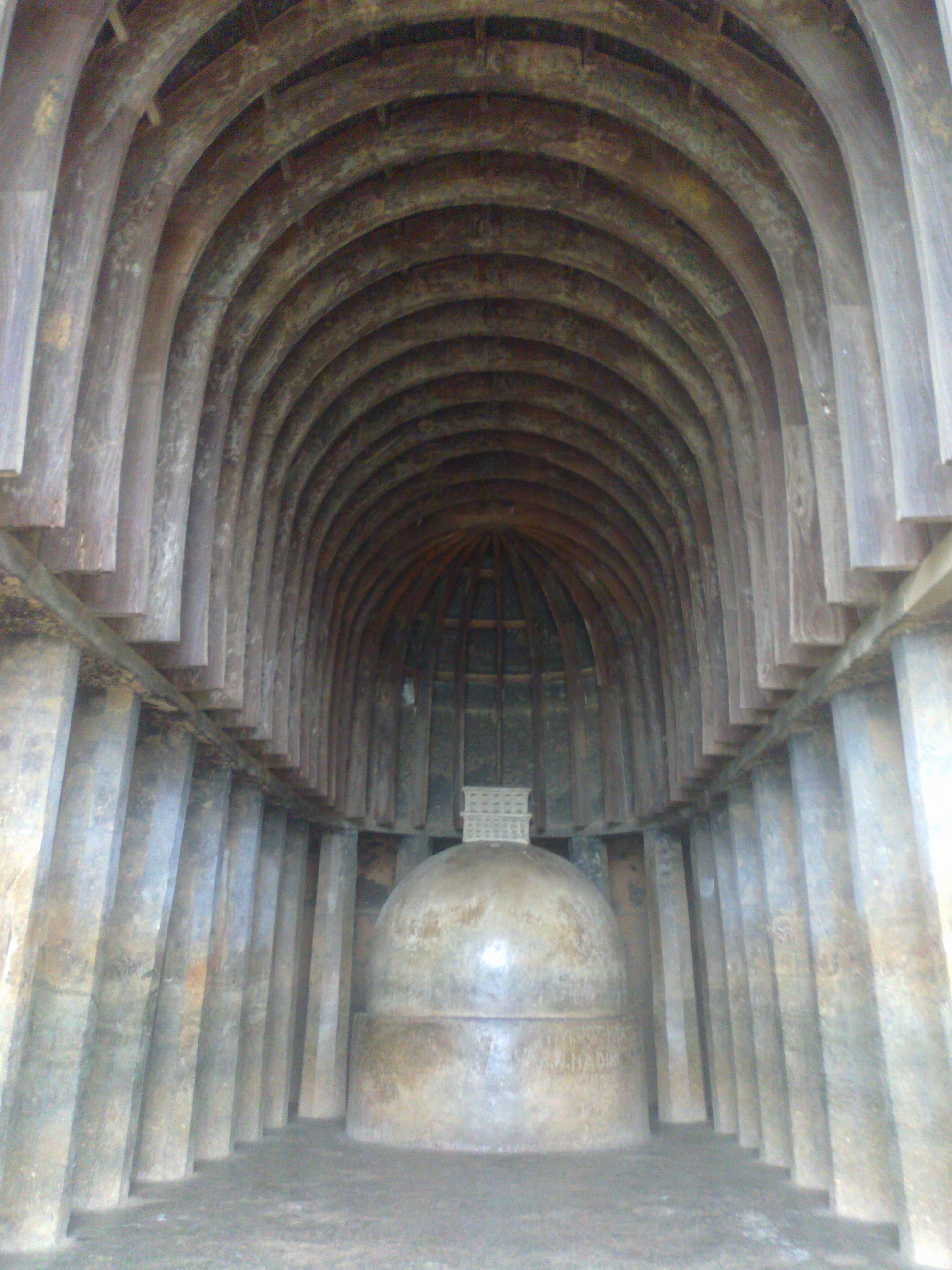 |
Category:Ajanta Caves , Public domain, via Wikimedia Commons Bodhisattva Padmapani Cave No. 1 |
INTRODUCTION
India is the birthplace of Buddhism and the soil in which some of the world’s most ancient Buddhist architecture first arose.
From simple stupas (mounded relic shrines) to rock-cut cave sanctuaries, monasteries (viharas), and monumental temple complexes, Buddhist architecture in India reflects the religion’s philosophical ideals, pilgrimage practices, patronage by emperors and merchants, and interactions with art, geography, and culture.
Origins & Early Developments
Buddhism began in the 5th-4th century BCE with Siddhartha Gautama’s life, enlightenment, teaching, and death. Early followers preserved the memory of the Buddha through relics and memorial shrines. The Mauryan Emperor Ashoka (3rd century BCE) was especially important. After the war of Kalinga, he adopted Buddhist values and commissioned many stupas, pillars, monasteries. These early stupas often were simple brick or earthen mounds encasing relics, later surrounded by railings, gateways.
 |
| Ajanta Caves © Vyacheslav Argenberg / http://www.vascoplanet.com/, CC BY 4.0, via Wikimedia Commons |
Over time, architecture evolved: rock-cut caves (chaityas and viharas), ornate stupas, image-centric temples, elaborate gateways (toranas), monastic complexes spanning hills, terraces, and regions far from the original homeland of Buddhism.
Different Buddhist schools (Theravāda, Mahāyāna, Vajrayāna) left their mark; regional styles and materials (stone, brick, stucco, wood) adapted to environment and resources.
Religious & Symbolic Dimensions
The architecture is not just “pretty buildings.” It embodies core Buddhist ideas:
-
Stupa form: Dome or mound represents the body of the Buddha, his mind; relics inside are sacred; the path around the stupa (pradakshina) allows pilgrims to walk meditative circuits.
-
Toranas / Gateways: Serve both ritual passage and narrative art—carvings of Jataka tales (stories of Buddha’s previous lives), scenes from his life, symbolic motifs (lotus, wheel, footprints).
-
Chaityas / Chaityagrahas: Prayer halls often with vaulted ceilings and an apse containing a stupa or symbolic object of worship. The design fosters congregation, chanting, ritual movement.
-
Viharas: Monastic dwellings, halls of study, teaching, meditation. Their layout often reflects communal monastic life: cells, halls, water supply, proximity to stupas.
-
Rock-cut caves: Carved into hillsides or cliffs, often in remote places. They hold a dual function: sanctuary and refuge, retreat from the world, place for monks to meditate, rest, study.
-
Pilgrimage & Sacred Geography: Many sites are located where Buddhist tradition says important events happened (enlightenment, first sermon, relic deposition). Architecture marks those events: Bodhi tree, sacred spots, shrines erected by later generations.
Seven Must-Visit Spots of Buddhist Architectural Wonder in India
Here are at least seven prime examples of ancient Buddhist architecture in India you should visit if you want to see the breadth, beauty, and regional diversity.
| # | Name | |||
|---|---|---|---|---|
| 1. Mahabodhi Temple Complex, Bodh Gaya (Bihar) |
The complex includes the main temple with a tall shikhara (tower), ancient brick structure (many layers of renovation), surrounding votive stupas, sacred Bodhi Tree, various memorials and pilgrimage spots like the Vajrasana (“Diamond Throne”). The brick temple is surrounded by stone railings and carved panels showing early Buddhist and Gupta period ornamentation. Being one of the earliest entirely brick Buddhist temples, it influenced later temple architecture across India and beyond. | |||
| Ajanta Caves |
The cliff-face architecture, fresco paintings, vaulted ceilings, and apsidal ends are beautiful examples of religious art and technical achievement. The caves also illustrate the transition from Hinayana to Mahayana Buddhism in visual and ritual form. | |||
| 3. Sanchi Stupa, Madhya Pradesh |
The site includes several stupas, gateways (toranas) richly carved, railings, monasteries, temples. It is exemplary for its ornate relief work, narrative panels, symbolic decoration, and the way architecture and sculpture combine. Walking around the Great Stupa and through the gateways gives a strong sense of Buddhist cosmology, ritual path, and devotion. | |||
| 4. Amaravati Stupa, Andhra Pradesh |
It has impressive sculptural relief panels, votive stupas, and a museum (for relocated sculptural fragments). The Amaravati style influenced Buddhist art in south India and Southeast Asia. It’s an example of how Buddhist architecture flourished beyond northern and central India into the Deccan and southern regions. | |||
| 5. Kesariya Stupa, Bihar |
It probably began in Mauryan times (3rd century BCE), with later modifications. Its size, scale, brickwork, terraces, and relation to landscape (hill, vegetation) make it impressive. The stupa’s architecture shows continuity of Buddhist devotion and artistry over centuries. | |||
| 6. Devni Mori (Devnimori), Gujarat |
The site illustrates how Buddhist architecture spread through trade routes in western India, adapting local materials and aesthetics but retaining symbolic forms like the stupa and image shrine. | |||
| 7. Bhaja Caves, Maharashtra |
They represent early experiments in converting wooden architectural prototypes into rock, and the use of rock-cut architecture for monastic and ritual purposes. Viewing the cave façades, interiors, inscriptions, you sense how artisans worked with rock and how early Buddhist ritual spaces were designed. |
Beyond those seven, there are many more to explore: Sonari stupas (near Sanchi), the Relic Stupa of Vaishali (one of the earliest), Kanaganahalli (stupa, brick buildings, Jataka panels), Bojjannakonda & Bavikonda in Andhra Pradesh (monastic ruins, caves, stupas), etc.
Architectural Styles, Materials, and Regional Adaptations
Understanding what makes these sites architecturally special helps deepen appreciation.
-
Stone, Brick, Stucco: Early stupas and temples used brick and earthen material; many rock-cut structures used basalt, granite. Stucco or plaster overlays sometimes used for reliefs or decorative surfaces.
-
Rock-cut vs Free-standing Structures: Rock-cut caves (Ajanta, Bhaja, others) represent carving into living rock; they provide controlled environments. Free-standing stupas or brick temples (Mahabodhi, Amaravati) are different in scale and exposure to weather, which influences design.
-
Early vs Later Buddhist Schools’ Aesthetic Differences: In early (Hinayana) phase, Buddha often represented symbolically (wheel, empty throne, footprints); later (Mahayana) phases introduced images of Buddha himself, Bodhisattvas, larger iconography, more decorative ornamentation. Ajanta shows this shift clearly.
-
Decorative Sculpture, Narrative Reliefs: Carvings of Jataka tales, scenes of daily life, mythical animals, natural motifs (lotus, vines, peacocks). Gateways, railings, caves often richly decorated.
-
Ceilings, Vaults, Chaitya Halls: Ciations of horseshoe arches over chaitya halls (vaulted, apsidal ends), rock vaults, columns with decorative capitals.
-
Pilgrimage-oriented spatial design: Sacred trees, memorial stones, votive stupas around main temple, enclosures, paths, terraces. Physical geography often guides the design: hilltops, river banks, remote valleys.
| Sanchi Stup Biswarup Ganguly, CC BY 3.0, via Wikimedia Commons |
Religious Importance & Cultural Legacy
-
Many sites mark key moments in the life of Buddha: Bodh Gaya (enlightenment), Sarnath (first sermon), Kushinagar (parinirvana), etc. These sacred moments have been preserved in stone, in stupas, in pilgrimage paths.
-
Architecture enabled communal worship, meditation, teaching. Monastic communities used viharas; lay pilgrims used stupas, chaityas.
-
Buddhist architecture was also a vehicle of art, an expression of royal patronage, of merchant community support, of cross-cultural exchange (e.g. influence of Gandhāra, of trade routes on sculpture styles).
-
These monuments have survived through centuries of climate, political change, sometimes neglect, rediscovery; they connect present day with the ancient past, giving heritage meaning.
 |
| Typical Veg North Indian Thali Prav2991993, CC BY-SA 4.0, via Wikimedia Commons |
How Tasty the Local Indian Food Is: A Flavorful Dimension of Pilgrimage & Travel
No architectural pilgrimage is complete without the taste of local food. Around many Buddhist heritage sites, the food is vegetarian or mixed, local grains, spices, sweet treats—comforting, nourishing, often simple but deeply satisfying.
Exploring the local cuisine adds texture to the travel experience, grounding the spiritual in the sensory.
 |
| VadaPav the famous maharashtrian fast food Darshanatiwari, CC BY-SA 4.0, via Wikimedia Commons |
Regional Culinary Flavours Near Buddhist Sites
-
Bihar (Bodh Gaya, Kesariya, Vaishali areas): Traditional dishes include rice, lentils (dal), vegetable curries, local bread types, sweets made with sugarcane, milk, local cereals.
Also local snacks such as litti-chokha (roasted wheat balls with spiced stuffing, served with mashed vegetables and chutneys), chura (flattened rice) with dahi (yogurt) and gur (jaggery), sweets made of milk solids. Street stalls and temple-town eateries often serve simple thalis (complete meals).
-
Maharashtra (Ajanta, Bhaja etc.): Food tends towards use of rice, lentils, coconut in coastal areas, but in inland caves more millet, jowar etc. Snacks like vada pav, bhaji, chaat, local sweets like modak, puran poli. Also of interest are the Maharashtrian thali meals: multiple small vegetable dishes, pickles, flatbreads (rotis, bhakri), and flavorful chutneys.
-
Andhra Pradesh (Amaravati, Bavikonda, etc.): Use of rice and rice dishes (pulihora, tamarind rice), sambar, rasam, fresh coconut chutneys, vegetable curries with spice and tang. Seafood in coastal areas; sweets like payasam; snacks like mirchi bajji, bondas.
-
Gujarat (Devni Mori region etc.): More vegetarian fare, sweets are more prominent (milk-based sweets, snacks like fafda, khandvi, dhokla in broader region), simple vegetables, pulses, use of spices in moderation.
Characteristics that Make the Food Especially Good
-
Freshness: Vegetables, grains, pulses are often locally sourced, fresh, seasonal.
-
Subtle spice balancing: Rather than overwhelming heat, spices are used to enhance aroma and texture—cumin, coriander, turmeric, chilies, ginger, garlic (where used), tempered with mustard seed or dry spices.
-
Sweet treats & dairy: Yogurt, milk, ghee feature; sweets made using milk, sugar, jaggery offer relief after walking and heat.
-
Street & temple-town food culture: Simple, often low cost, often made hygienically by traditional cooks, often vegetarian or suitable for devout visitors. Tea stalls, small shops serving snacks or light meals simplify day’s travel.
Memorable Food Examples
-
After visiting Bodh Gaya, one might enjoy a thali with rice, dal, mixed vegetables, roti, plus a serving of curd with jaggery or sweet yogurt dessert. The warmth of dal spiced well, the softness of bread, the tang of pickles, and the creamy dessert make for a satisfying contrast to stone and sun.
-
Near Ajanta caves, lunch might include spicy dal, rice, vegetable curry, perhaps a crispy papad, watermelon or fresh local fruit, for cooling refreshment; then tea with biscuits or local sweet (such as a coconut or jaggery sweet) to restore energy.
-
In Bihar’s temple towns, small items like chura-dahi-gur or chooras with curd and jaggery and local sweets are deeply comforting after climbing stupas or walking through relic sites.
Food here is part of pilgrimage: to feed body while exploring ancient stones and sacred places. The sense of community in meals, simplicity, generosity, hospitality are all part of the experience.
Practical Tips for Visitors & Enhancing the Experience
To get the most out of visiting ancient Buddhist architecture in India, and savor the food, here are suggestions:
-
Timing: Early morning or late afternoon visits bring better light on carvings, more comfortable temperatures. Monsoon and hot seasons can make caves damp or the walk difficult.
-
Guides and local stories: Many carvings and reliefs have stories (Jataka tales etc.) whose meaning is richer when explained. Guides help with symbolism, local legends.
-
Respectful behaviour: Buddhist sites are often active places of worship; remove shoes where required, maintain silence in sanctums, follow dress codes.
-
Stay in local guest houses or dharmasalas: Many pilgrimage towns have lodging run by religious or local community, offering both simplicity and immersion.
-
Try local food beyond tourist restaurants: Street stalls, small shops, temple-town eateries often have better, more authentic food. Ask locals.
-
Carry water, light snacks, sun protection: Many sites are remote or partially exposed. Snacks protect from hunger after walking.
Why Ancient Indian Buddhist Architecture Still Speaks to Us Today
-
It embodies religious ideals visible in stone, symbol, space; it is historical testimony of ideas that shaped spiritual and ethical thought globally.
-
It shows artistry, craftsmanship, architectural innovation: brick work, rock cutting, sculpture, painting, relief carving, math and geometry in design.
-
It connects people across centuries: pilgrims, monks, artists, donors, rulers, and today’s visitors share in wonder.
-
It offers lessons in endurance, conservation, interplay of nature, human belief, material durability.
-
It enriches modern travel with deeper meaning: not just looking but understanding, not just seeing but feeling, not just consuming but reflecting.
Conclusion
Ancient Indian Buddhist architecture is a tapestry woven of sacred belief, architectural creativity, craftsmanship, regional adaptation, artistic innovation, and social and spiritual practice. From stupas like Sanchi and Amaravati to cave sanctuaries like Ajanta and Bhaja, from Bodh Gaya, where the Buddha attained enlightenment, to lesser-known relic sites in Gujarat or Bihar, each monument tells stories in stone: of faith, of journey, of memory.
Complementing these visual and spiritual journeys is the taste of the land—vegetarian meals, local sweets, salty and sour notes from pickles, the comfort of dal and rice, the relief of fresh fruit, and the simple joy of sharing meals among pilgrims or travellers. Architecture feeds the mind; food feeds the body; together they nourish the whole traveler.
If you plan a trip spanning several such sites, you’ll come away not just with photographs, but a sense of continuity: of ancient whispers in carvings, ritual paths trodden by countless feet, and flavors blended by centuries of culture. Buddhist architecture in India is not just heritage—it’s a living invitation to wonder, peace, and taste.
Sources
-
Details on Mahabodhi Temple Complex, Bodh Gaya; its history, architecture, chronology.
-
Ajanta Caves: phases of cave excavation, architectural plan (chaitya, viharas), mural art, Satavahana and Vakataka periods.
-
Sanchi Stupa: Mauryan period, Ashokan commission, gateways, toranas, relief work.
-
Amaravati Stupa: sculpture panels, enlargement phases, role in Deccan Buddhist art.
-
Kesariya Stupa: discovery, brick structure, relics, physical dimensions.
-
Devni Mori — monastery and stupa in Gujarat, terracotta and early Buddhist imagery.
-
Bhaja Caves: early rock-cut caves, chaityas, monasteries.
-
Information on regional cuisines around Bihar, Maharashtra, Andhra, Gujarat; small pilgrim-town food culture.


_district_of_Bihar%2C_India._10.jpg)
.jpg)

No comments:
Post a Comment